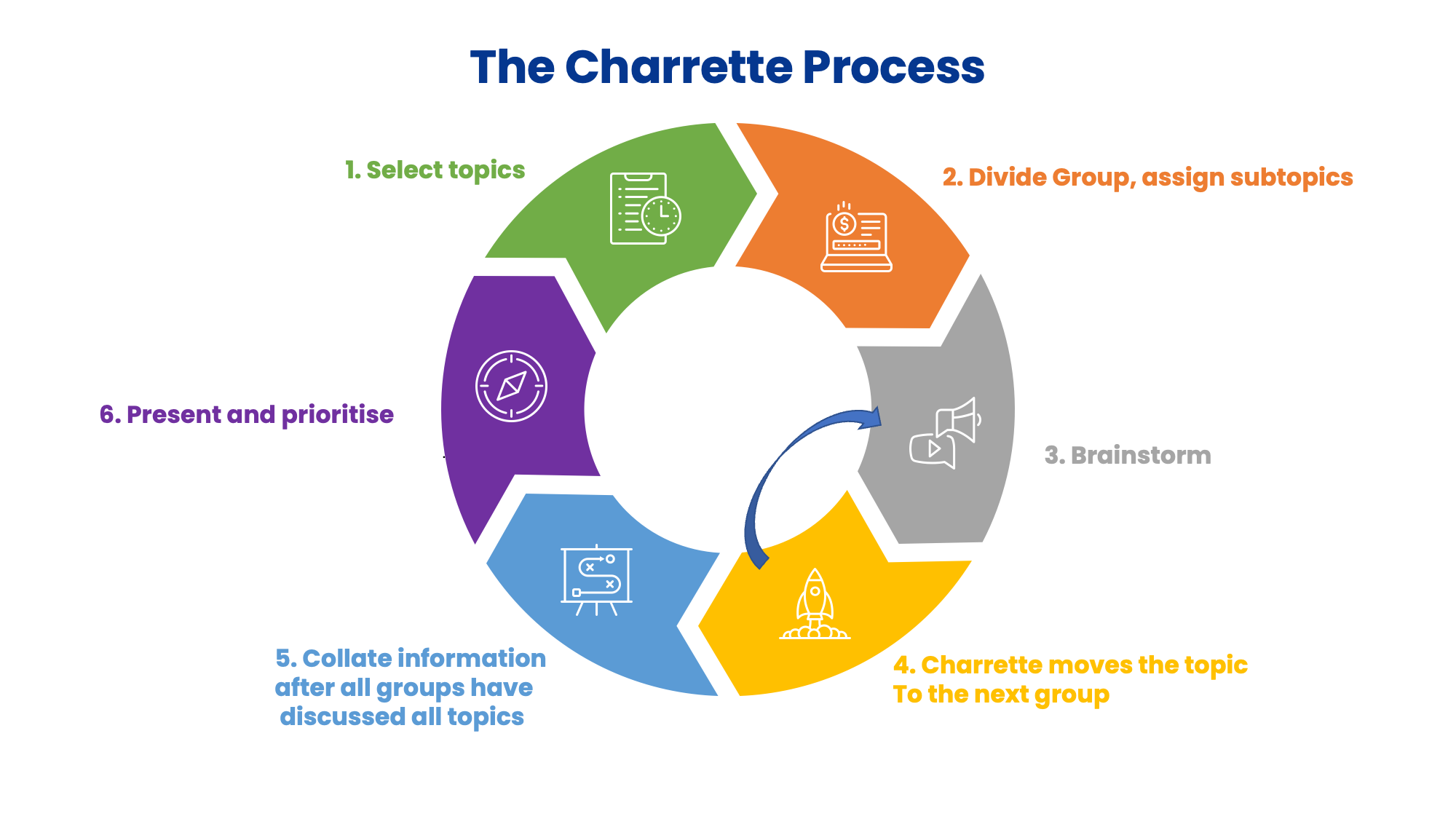The Charrette Procedure: A Brainstorming Technique
The Charrette procedure is a great tool for effective brainstorming with larger groups or if you have multiple ideas to discuss

My brother in law was telling me he is leading stakeholder meetings to try and create a new integrated transport network in his city. We got into discussion on the problems of brainstorming when the number of people involved increases above about 15.
Often I am running large group workshops single handedly which can be quite a handful to control so many people or multiple ideas when brainstorming. The Charrette Procedure addresses these problems and is a useful tool to add to your agile kitbag.
The Charrette procedure originated in France and was based on a utilisation of a cart (charrette) by students to carry their work to make deadlines. Have you ever played the game when you are in a group and the first person makes a sentence and then the next person follows that with their sentence until you have a completed story? This has a similar concept of ideating and passing that on to another group who ideates from that. You will quickly get the idea and find it brings back some control which is lost when brainstorming with a large number of people. I will use the setting I would work with in my classroom to show you how to run it.
When to use it:
When brainstorming with a large number of stakeholders/team players (say 15+)
When brainstorming a number of ideas at once
When you want to break people out of their organisational stovepipes and have genuine collaborative engagement
What you need:
A large room
Flipcharts and pens - a whiteboard is impractical for this.
The procedure I use:
- Since we are doing things collaboratively, the first thing to do is agree on what the problem is we are brainstorming and break it down into subtopics.
- Break the group into teams of say 4-5 , one of them will be a note taker (known as "the charrette" from now on and who will move from group to group).
- Hand out a different subtopic to each group.
- Start a clock and get the teams to brainstorm their issue (the person who is the charrette enables the group discussion and notes ideas and concerns).
- At the allotted time interval an alarm sounds and discussion stops. The charrette completes their notes.
- The charrette from each group moves on to the next one and briefs their new group on the subtopic and the key points and findings from the first groups brainstorming. They take with them any flip charts or mind maps that may have been drawn.
- When everyone is ready, start the clock again and the groups now brainstorm their new topic, building on the work of the previous group.
- Repeat until all the groups have discussed the issues.
- Now it's time for a coffee break and allow the charrettes time to collect all the ideas and key elements that the groups made on their subtopic and prepare a back-brief presentation.
- Charrettes present their findings to the group on each subtopic and then discussion and prioritisation can be done to form an initial plan.

The advantages in using it:
- By breaking the size of the group down I have better control over what is happening as I try and enable quality discussion.
- Shy or introverted people often have good ideas. They are more likely to be engaged in small group activity that in a large group discussion.
- By building on the initial work of others, a better thought out and developed brainstorming session can be achieved.
- Small group discussion is less likely to stall than with a large group.
- In large groups, there is often one or two people who over dominate discussion. By breaking into smaller groups their impact in steering and perhaps limiting the ideation we want is reduced.
Use outside the classroom:
So far I have spoken about how I use it for brainstorming large participants in my business training courses. To get an idea of how it is used collaboratively in something like urban regeneration here is a link to the World Bank on Charrettes.
One of the advantages of using a charrette for projects and design discussion is that it can take the tension out of group meetings, reducing the prospect of angry stakeholders voicing their concerns in a public hearing kind of way.
Next time you want to have a brainstorming session with a large group or to deal with many ideas, give the Charrette procedure a try.
